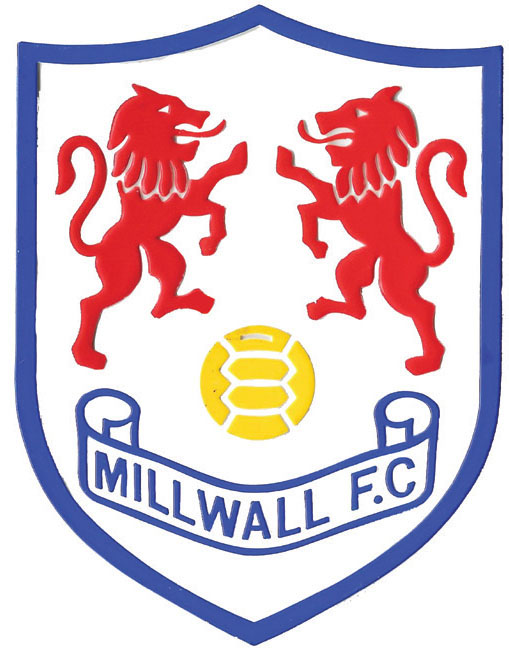
MILLWALL
IN THE LIONS’ DEN
Originally founded in 1885 on the Isle of Dogs in East London and nicknamed the Dockers, Millwall only became known as the Lions at the beginning of the 20th century. When they moved to a new ground in 1910, it was appropriately named the Den because the fans have a reputation for being amongst the most fearsome in British football. The tough image associated with the club is characterised by their uncompromising chant of ‘No one likes us, we don’t care.’
Millwall have spent the majority of their history in the lower divisions, but in 1988 they reached the top flight for the first time in their history, winning the Second Division Championship under manager John Docherty. This achievement briefly ushered in the most successful period in the club’s history, when the dual strike force of Teddy Sheringham and Tony Cascarino were one of the most formidable in the First Division. The club finished 10th in their first season.
However, they were relegated the following season and have not returned to the top tier since then. When they reached the FA Cup final in 2004, they became only the second team from outside the top division to do so since 1982. Despite their 3-0 loss to Manchester United, this marked the greatest single achievement in their history. In the last two decades they have been close to promotion back to the top flight, only to lose out in the play-offs – in 1991, 1994 and 2002.
CLUB: Millwall FC
NICKNAMES: The Lions and The Dockers
FOUNDED: 1885
STADIUM: The Den, London (20,146 capacity)
HISTORIC PLAYERS: Barry Kitchener, Keith Stevens, Teddy Sheringham, Neil Harris and Tim Cahill

Millwall’s original nickname, the Dockers, referred to both the club’s origins and its fans. After the team created a stir in the FA Cup in the 1899/1900 season and knocked out the giants Aston Villa, Millwall were called ‘the Lions of the south’, a nickname that stuck and inspired the club’s first emblem: a lion rampant. It was also during the early 1900s that the motto ‘We fear no foe where e’er we go’ began to be used. The exact year for this emblem has not been confirmed.

1936–1956. It took until 1936 before the emblem was seen on Millwall jerseys. This was introduced by the then manager Charlie Hewitt, who also changed the club’s colour from navy blue to royal blue. The red lion looks like Scotland’s national crest, which has led to the misapprehension that this was the inspiration for the badge.

1956–1974 and 1990–2007. The Millwall crest has existed in various guises, but this one lasted longer than most. In the mid-1950s the one lion became two. This design proved popular with the fans and was taken up again during the era of chairman Theo Paphitis, some 25 years after it was introduced. Millwall players wore this badge at the club’s greatest success to date: the FA Cup final of 2004, which they lost 3-0.

1978–1999 and 2007–present. This emblem of the attacking lion, the longest lasting (in various guises) in Millwall’s history, was unveiled in 1979. Over the years, the lion has changed colour, has stood alone, has been flanked by the club initials, and has been encircled like today’s variation, used since 2014.

Eamon Dunphy sports the 1967 incarnation of club crest. The Irishman was considered an intelligent and skilful midfielder, and was a member of the 1971 Millwall side that failed by just one point to gain promotion to the First Division.